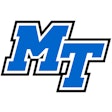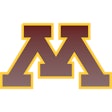While the pandemic has put the sports calendar on pause for the foreseeable future, additional problems caused by the coronavirus could put up secondary roadblocks to collegiate student-athletes getting back on the playing field.
According to a report in Forbes, student-athletes traditionally arrive on campus with their own health insurance policies, which must be maintained in order to play. Proof of insurance — typically provided by a student-athlete’s family — must be provided by a student-athlete before they can step onto the field, regardless of scholarship status.
Penn State describes the responsibility of student-athletes to provide their own health coverage thusly:
“Failure to report up-to-date insurance information may result in an athlete’s ineligibility. All student-athletes whose families do not have an insurance plan are required to purchase an insurance package that does not exclude intercollegiate athletic sports injuries.”
But with unemployment claims spiking — more than 22 million people filed for unemployment within the last three weeks — and a number of those people losing employer-sponsored health benefits, student-athletes may face an additional hurdle to returning to competition when the crisis has abated.
There are some provisions that can fill particular gaps in healthcare coverage. For instance, a certified athletic trainer employed by a school can provide treatment for minor injuries. But more serious injuries that require emergency room or urgent care treatment rely on student-athletes’ own health insurance — at least for some of the subsequent medical bills. Forbes reports that a university policy could act as “secondary” insurance, assuming that a student-athlete’s insurance covers 80 percent of the bill.
Additionally, an NCAA Athlete Assistance Fund could be used for medical expenses — but the availability of such funds depends on factors such as the number of applications and the discretion of an individual athletics department.
Forbes suggests that athletics departments brace for an additional hit to budgets, or for the possibility that student-athletes are no longer able to pay for the insurance that they need to play college sports.





































